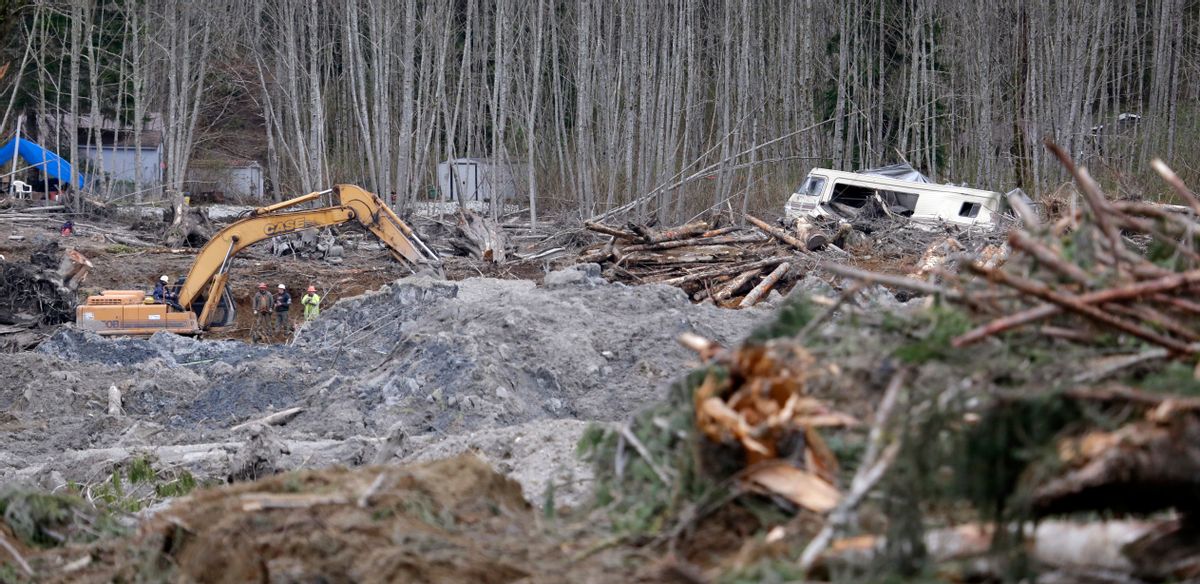It was all over in 60 seconds. The hillside in Oso, Wash., crumbled, sending 10 million cubic yards of mud downhill at the incredible speed of 60 miles per hour, across the Stillaguamish River, over the small neighborhood at Steelhead Drive and all the way to the far side of the valley.
In the end, a square mile area was buried in mud and debris, 30 homes were flattened, and 36 people, at the most recent count, were killed.
"It would be like a wall of semi-trucks, shoulder to shoulder, a kilometer wide — all moving at 60 miles per hour,” Dr. Richard Iverson, a landslide specialist with the U.S. Geological Survey's Cascades Volcano Observatory, told a local news station. "That's how I picture it."
This computer model, created by Iverson, shows the slide's rapid descent:
Here's more from the Seattle Times on Iverson's investigation of the landslide, which he called "freakish":
Iverson spent several days at the site last week and is compiling the first scientific report on what he believes will be a “profoundly important” event in the understanding of landslide hazards.
When the recovery effort is over, he and other scientists hope to study the slide in detail, trying to figure out why it so quickly liquefied and ran out for nearly a mile — more than three times the distance Iverson would have expected based on comparison with hundreds of other slides of similar heights.
“This bluff is only about 180 meters (about 600 feet) tall, which by Northwest standards is sort of small potatoes,” Iverson said.
... “Any geologist who went out there would say, yes, this situation is ripe for a landslide,” Iverson said. “But in my mind, the story isn’t that a landslide occurred, but the type of landslide that occurred.”
He blames the disaster on a combination of unusually wet weather, erosion at the toe of the slide and local geology.

Shares